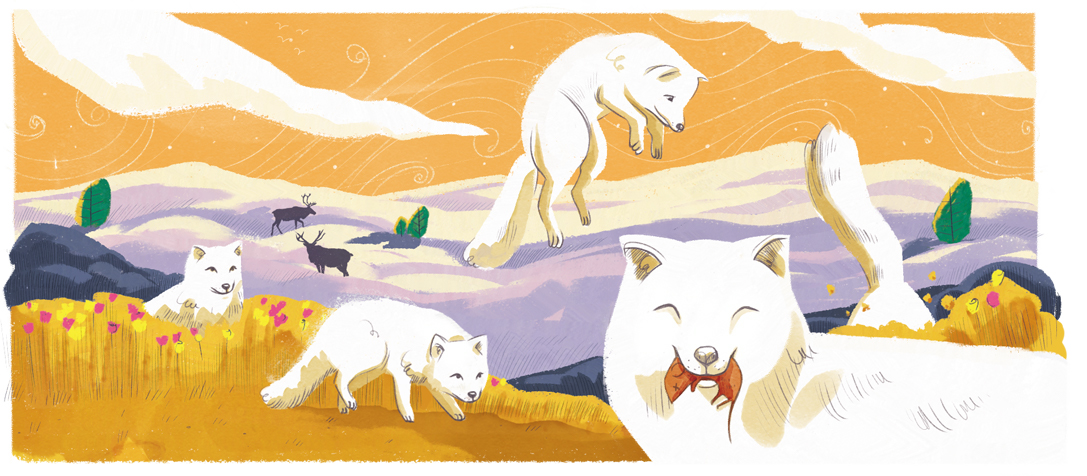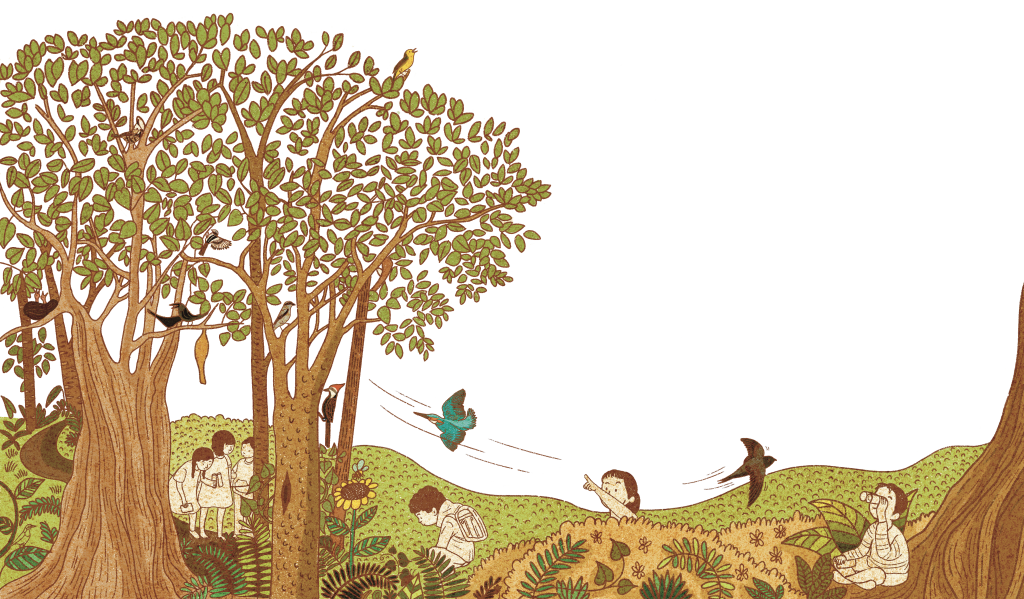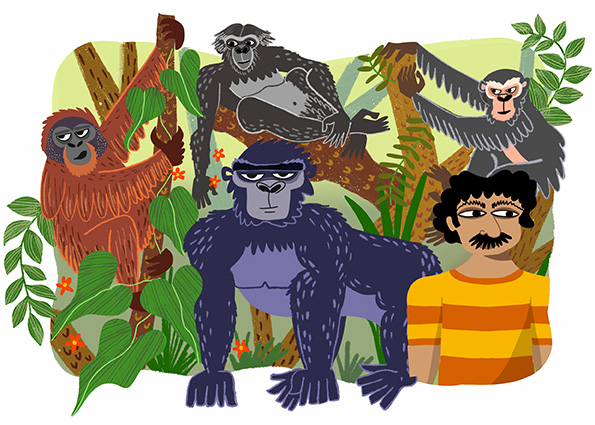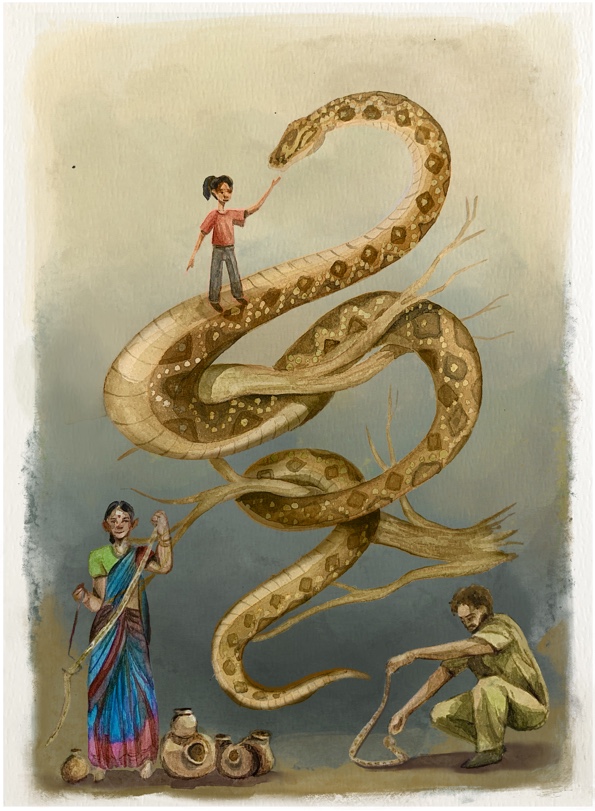Hello! My name is Lumi, and I’m an Arctic fox. My name means snow in Finnish, or at least that’s what some humans said. I don’t think we’ve met. I cannot wait to tell you all about where I live and what I do every day.
Life with Lumi
I live in the frigid Arctic tundra. This habitat stretches across countries like Russia and Canada. You might be wondering, what’s a tundra? The humans call this area a tundra because of its freezing temperatures and for the lack of trees. There aren’t many forests around here! When I look out of my den, the land is flat practically everywhere.
It is cold for most of the year, but I don’t worry much about it. I have thick white fur for the winter months. It keeps me warm and helps me blend into the snow. I also have extra layers of fat under my skin that keep me nice and toasty in my coat. When it is warmer out, I shed my thick white coat and grow thinner brown fur. That helps me blend in better with the dirt on the ground and around my den.
Right now, it’s winter, so my fur is white and shiny. This morning, as it is many mornings in winter, the snow seems to turn orange and yellow as the sun rises higher in the sky. It’s lucky that today we have some sun. Many days in the winter, there are clouds. The sky and everything else turn pale grey.
Lumi’s morning routine
I climb out of my den and stretch my neck up and up. I imagine that my nose could touch the sun if I reach high enough. I take a deep breath in and smell the whole tundra around me. I have a keen sense of smell—I’ll catch your scent before laying eyes on you! Especially with the wind blowing all the time, another trait of the tundra.
Every Arctic fox has its own territory in which to live. I know my boundaries with my neighbours and stay in my space. I am a carnivore or a meat eater. I must hunt for food in my territory. I am pretty hungry, so I’ll hunt for small animals like mice and voles today. Mice and voles are practically cousin species!
I can’t wait for summer. That’s when food is the best! When it’s warmer, there are many plants around. I eat berries and fruits, too. If I ever explore near the ocean, I’ll even try seafood, like urchins and shellfish. I’ll stick to what I can find now that it’s cold. I use my sense of smell to find the prey first. The humans have a name for this, too! They say I’m an opportunistic feeder. That must mean that I look for good opportunities to find food, no matter what that is.
There!
I smell a vole! Luckily for me, I have furry, padded feet that help me keep quiet as I march through the snow and ice. I inch closer and closer to where I smell the vole burrowing in the snow. You may not know this, but I have a unique trick when hunting burrowing voles.
Three,
Two,
One,
POUNCE!
I leap into the air and slam my nose into the snow! Gotcha! I pull my nose out of the ground with a juicy vole for me to eat. This is my first time seeing it since I had just smelled it under the snow. This one is round with brown fur, like a rabbit, and fits perfectly in my mouth. I’ll take it to my den, where I can eat without worrying about predators or the icy winds.
Home is where the den is
My den is the most important part of my life in the Arctic tundra. That’s where I sleep, where I eat, where I hide from predators, and where I will one day raise my pups. Growing up, I had 13 brothers and sisters, so I think that’s a good number of pups to have as an Arctic fox. I’ve worked extremely hard on my den. It took a long time to dig out and shape to my liking. I built it all by myself. I tried to copy the cosy den that my own mother raised me in when I was just a pup. That was long before I was out on my own.
I remember my mother’s den being snug, warm and safe. In the winter, it was covered in snow. When the sun shone exactly right, the snow outside the den would sparkle like stars in the night sky. That’s why I worked so hard on my den. I wanted to make it as safe and cosy as my mother’s den. Now, in the wintertime, snow covers my den’s entrance, and the sun shines on it perfectly, too. I get to see the light sparkle through the snow, just like when I was a pup.
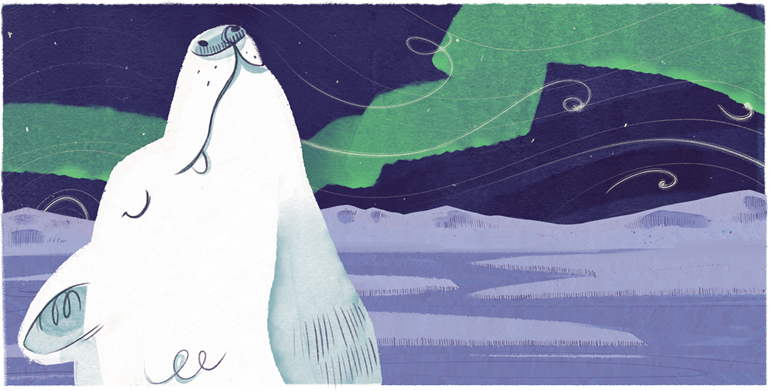
Why my den is best
Now that I’ve lived in my den for a while, I’ve noticed some curious things about it. Many more plants are near my den than in other areas of the tundra! There are lots of grasses and some plants that grow flowers in the spring. I bring many snacks into my den to eat without any interruptions. I leave my leftovers outside my den if I bring too much, and then after a while, if no one gets to it first, the bugs and worms eat the rest, and it breaks down into the dirt. That’s how all the pretty plants grow!
The humans call me an ecosystem engineer. It took some time to think about this, but I think I finally figured out what that means. An engineer is someone who builds or creates something. An ecosystem is a place where lots of animals and plants live together. So, the humans have named me a builder in the Arctic tundra ecosystem. They said that I’m a keystone species, too. I guess I am also a key part of this ecosystem, another name humans use to describe a place where lots of plants and animals live together. The humans gave me good names because I do have a den that gets visitors.
That must be why caribou visit my den so often. I have some of their favourite snacks growing right outside my front door! Caribou aren’t the only ones. I get all kinds of visitors. I’ve seen big animals like polar bears, grizzly bears, geese, eagles and even snowy owls! Those are always a little scary to see so close to my home, but usually, they just come for the leftovers I leave behind. Either way, I’ll stay in my favourite corner of my den until they are gone. It’s best to give big predators their space.
Now that I have lived in my den for some time, I have noticed the caribou herds travelling closer to my den, but not too close. They really like the plants that grow near my den, so now they’ve chosen a new route that puts them closer to me. That makes me an ecosystem engineer, too! Thanks to my den, I’ve changed where the caribou herds move in the tundra. When the caribou herds move, other predators like wolves and other foxes will follow them to hunt.
I had no idea a little fox like me could make such an enormous difference in this vast, snowy habitat. I shape the Arctic tundra and where the animals here move to. I never realised just how important foxes are until I heard some humans talk about them. I’ll definitely have to teach that to my pups! I learned so much by listening to them and discovering things on my own. The humans I’ve heard from far away called themselves scientists, explorers and teachers. Humans should listen to them more—they know a lot. I hope humans teach their pups to learn and explore too!
